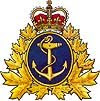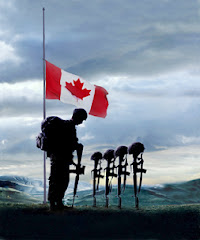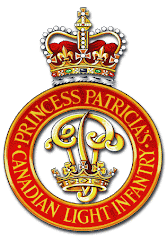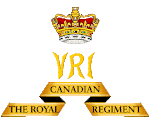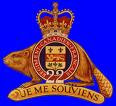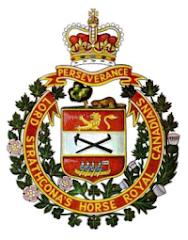
As threatened a little while ago, I've decided to take a stab at providing some of you with a list of tools that you'll need for carrying out basic maintenance and repair drills on your beloved bike. I'll provide a listing of basic handtools, followed by some "tools of interest" or special application tools.
The very first item on the list is the maintenance manual for your bike. These normally cost a few dollars but are well worth whatever you pay for them. Besides, you can't reasonably expect to work on your wheels without one. Every fastener on that machine has a specific torque value. You can't possibly guess these, so get the book...
- A good Socket set: This should contain 1/4", 3/8" and 1/2"-drive ratchets, sockets and extensions. Your sockets should be a mix of 6-point and 12-point, metric and standard, and should include some deep sockets as well as a set of metric and standard hex head drivers. You'll find many fittings on your bike are in fact hex heads. Make sure you also have the appropriate deep sockets for your particular spark plugs and sockets large enough to take care of your wheel nuts. As far as the ratchets go, you may want to spring for a small 3/8" drive palm ratchet as well. I find these indispensable for most work as they are lighter and much less work on your wrist to use. If your ride has some Torx fasteners on it, make sure you have the matching sockets in your arsenal.
- Torque wrenches: At the very least, you will require one 3/8"-drive and one 1/2"-drive torque wrench. The 3/8"-drive will take care of 90% of all your bike's fittings, as mentioned in a previous post. The 1/2"-drive torque wrench will take care of large fittings, such as those found in your primary drive system (engine, clutch, tranny...) and your wheels. Old-school wrenches still use beam-type or deflection type torque wrenches, but do yourself a favor and get a click-adjustable pair. This will save you the years of experience it takes to proficiently use one of the former.
- A good set of hand wrenches: These are invariably used in conjunction with your ratchet drive sets. A set of both metric and standard is a basic requirement. Canadian Tire often has their famous 50% off sales on these and you can get a professional-grade set for a steal of a price. Box wrenches are far better on a fitting than an open-end wrench. You will be much less prone to round off the shoulders of the nut you're tightening and will be less likely to leave tool marks on your fasteners. NOTE: Sockets and wrenches are the only tools that should ever come into contact with a nut-type fastener. Adjustable wrenches are handy to have, but should only be used as a last resort on any fastener. No doubt you have also seen people employ pliers to hold a nut (or worse, to loosen it...), but these folks should be flayed alive with the primary chain from an old Panhead. A monkey would not use a set of pliers on a nut...It is from the same school of illogic as those who would use a butter knife as a screwdriver... These are the people who should be kept as far away from your tools as is humanly possible. Again, ensure you have a wrench large enough for holding your axle fittings and invest in an oil filter wrench while you're at it.
- A good set of mechanic's screwdrivers: These are readily available in fairly inexpensive sets. (Try your local Princess Auto store...). The difference between a set of mechanic's screwdrivers and a standard set, is that you will notice at the base of the shaft, a hex-type shoulder, where you can apply a wrench to the screwdriver.
- A good collection of pliers: These should include various sizes and lengths of needlenose pliers (straight and bent...), side cutters, linesman pliers, vise-grips, a small and large set of channel-lock pliers and a variety of snap-ring pliers. I also keep a mini-set of spring-handled pliers on hand for doing more delicate, electrical or soldering work.
- A set of hammers: More than one hammer? Absolutely... You're not going to use that ol' claw hammer to drift home your front or rear axle are you? Or to tap another type of part or fitting into place? So... One ball-peen hammer (or two, one small, one large...), one rubber mallet, one dead-blow mallet (plastic, shot-filled) and one short-handled mass.
- Thread locker: I always keep one bottle of red and one bottle of blue thread locker on hand. The brand does not matter as they all work the same. Only a drop or two is required when using this stuff. You don't have to coat the entire fitting! Also when removing a screw or bolt that has thread lock on it, make sure you clean off the old thread lock before re-installing it.
- Funnels and containers: Your bike will require draining of and filling with many different types of fluids. It will seem that you can never find a funnel to suit a particular requirement. Notably when draining the oil from your bike. When replacing fluids, remember that you need somewhere to catch and store the old fluids, until you can pour them into the containers you just emptied into your bike. Always dispose of used fluids responsibly! Your local Canadian Tire store will take them off your hands for a nominal fee.
- Shop supplies: When working on any given part of your bike, you will always need various shop supplies to competently carry out your maintenance. These would include parts and brake cleaner, lithium grease, dielectric grease, axle grease and cable lubricants for your various moving parts, shop rags, polishes and waxes. Always have on hand as well, the various fluids that your motorcycle requires, such as engine oil, tranny oil, brake fluid, fork oil, radiator coolant, etc... You will get solvents, gasoline and oil on your hands and other parts of you, believe me. Many of these fluids contain known carcinogens. Keep a good hand cleaner on hand, as well as a skin moisturizer to use afterwards. Most good hand cleaners strip all the oils from your skin, causing them to dry and crack if left unattended.
Special Tools.
As you become more skilled and adventurous in your bike's maintenance, you will note that your maintenance manual advises: "certain jobs require specific tools". Changing out your fork seals for example, will require the use of a fork seal tool. The same applies for pulling or seating bearings and other types of seals. These are tools you can add to your chest over time, if you so desire. They all serve to render you independent of your local shop. A compressor is always a very handy addition to any shop or garage. It needn't be that big either. Compressed air is great for aiding in the cleaning of parts or even drying your bike after it's been washed. As far as using air tools on your bike, these should be used only for disassembly of parts. NEVER USE AN AIR TOOL TO TIGHTEN A FASTENER ON A MOTORCYCLE!
A lift in any shop or garage is a veritable gift from God. If you have the room for a hydraulic lift, you're pretty much spoiled rotten and I hate you...
At some point you'll probably want to try your hand at installing custom electrical parts. This will no doubt involve some minor soldering. So you'll want a decent soldering gun, some flux paste and some fine grade solder. Small packets of various diameter shrink-tube are also a requirement. Solder connections are an art in themselves. Like many other endeavors, it's all in the prep work. Get some old wiring and practise on cleaning it up, prepping it and doing soldered splices. You'll be surprised how quickly you can become adept at it. A good, strong solder joint should always be shiney (a dull finish indicates a cold solder joint... not reliable) and never be taped up. Electrical tape was acceptable in the days before shrink-tube, but not anymore. A good splicing job should be virtually invisible to the eye. Seamless...
Two final tools that you may find indispensable, are a basic multimeter and a voltage probe. The voltage probe simply clamps to your frame and when you touch a junction that's holding 12 volts DC, the handle lights up. It's a great little visual tool for faultfinding an electrical circuit, to say nothing of verifying that soldering job you just did. The multimeter will allow you to measure voltage, amperage of resistance values in your bikes circuits.
So that pretty much concludes your basic tool requirements for carrying out your basic maintenance on your baby. No, it's by no means an exhaustive list, just enough to get you started on the road of becoming self-sufficient.
The very first item on the list is the maintenance manual for your bike. These normally cost a few dollars but are well worth whatever you pay for them. Besides, you can't reasonably expect to work on your wheels without one. Every fastener on that machine has a specific torque value. You can't possibly guess these, so get the book...
- A good Socket set: This should contain 1/4", 3/8" and 1/2"-drive ratchets, sockets and extensions. Your sockets should be a mix of 6-point and 12-point, metric and standard, and should include some deep sockets as well as a set of metric and standard hex head drivers. You'll find many fittings on your bike are in fact hex heads. Make sure you also have the appropriate deep sockets for your particular spark plugs and sockets large enough to take care of your wheel nuts. As far as the ratchets go, you may want to spring for a small 3/8" drive palm ratchet as well. I find these indispensable for most work as they are lighter and much less work on your wrist to use. If your ride has some Torx fasteners on it, make sure you have the matching sockets in your arsenal.
- Torque wrenches: At the very least, you will require one 3/8"-drive and one 1/2"-drive torque wrench. The 3/8"-drive will take care of 90% of all your bike's fittings, as mentioned in a previous post. The 1/2"-drive torque wrench will take care of large fittings, such as those found in your primary drive system (engine, clutch, tranny...) and your wheels. Old-school wrenches still use beam-type or deflection type torque wrenches, but do yourself a favor and get a click-adjustable pair. This will save you the years of experience it takes to proficiently use one of the former.
- A good set of hand wrenches: These are invariably used in conjunction with your ratchet drive sets. A set of both metric and standard is a basic requirement. Canadian Tire often has their famous 50% off sales on these and you can get a professional-grade set for a steal of a price. Box wrenches are far better on a fitting than an open-end wrench. You will be much less prone to round off the shoulders of the nut you're tightening and will be less likely to leave tool marks on your fasteners. NOTE: Sockets and wrenches are the only tools that should ever come into contact with a nut-type fastener. Adjustable wrenches are handy to have, but should only be used as a last resort on any fastener. No doubt you have also seen people employ pliers to hold a nut (or worse, to loosen it...), but these folks should be flayed alive with the primary chain from an old Panhead. A monkey would not use a set of pliers on a nut...It is from the same school of illogic as those who would use a butter knife as a screwdriver... These are the people who should be kept as far away from your tools as is humanly possible. Again, ensure you have a wrench large enough for holding your axle fittings and invest in an oil filter wrench while you're at it.
- A good set of mechanic's screwdrivers: These are readily available in fairly inexpensive sets. (Try your local Princess Auto store...). The difference between a set of mechanic's screwdrivers and a standard set, is that you will notice at the base of the shaft, a hex-type shoulder, where you can apply a wrench to the screwdriver.
- A good collection of pliers: These should include various sizes and lengths of needlenose pliers (straight and bent...), side cutters, linesman pliers, vise-grips, a small and large set of channel-lock pliers and a variety of snap-ring pliers. I also keep a mini-set of spring-handled pliers on hand for doing more delicate, electrical or soldering work.
- A set of hammers: More than one hammer? Absolutely... You're not going to use that ol' claw hammer to drift home your front or rear axle are you? Or to tap another type of part or fitting into place? So... One ball-peen hammer (or two, one small, one large...), one rubber mallet, one dead-blow mallet (plastic, shot-filled) and one short-handled mass.
- Thread locker: I always keep one bottle of red and one bottle of blue thread locker on hand. The brand does not matter as they all work the same. Only a drop or two is required when using this stuff. You don't have to coat the entire fitting! Also when removing a screw or bolt that has thread lock on it, make sure you clean off the old thread lock before re-installing it.
- Funnels and containers: Your bike will require draining of and filling with many different types of fluids. It will seem that you can never find a funnel to suit a particular requirement. Notably when draining the oil from your bike. When replacing fluids, remember that you need somewhere to catch and store the old fluids, until you can pour them into the containers you just emptied into your bike. Always dispose of used fluids responsibly! Your local Canadian Tire store will take them off your hands for a nominal fee.
- Shop supplies: When working on any given part of your bike, you will always need various shop supplies to competently carry out your maintenance. These would include parts and brake cleaner, lithium grease, dielectric grease, axle grease and cable lubricants for your various moving parts, shop rags, polishes and waxes. Always have on hand as well, the various fluids that your motorcycle requires, such as engine oil, tranny oil, brake fluid, fork oil, radiator coolant, etc... You will get solvents, gasoline and oil on your hands and other parts of you, believe me. Many of these fluids contain known carcinogens. Keep a good hand cleaner on hand, as well as a skin moisturizer to use afterwards. Most good hand cleaners strip all the oils from your skin, causing them to dry and crack if left unattended.
Special Tools.
As you become more skilled and adventurous in your bike's maintenance, you will note that your maintenance manual advises: "certain jobs require specific tools". Changing out your fork seals for example, will require the use of a fork seal tool. The same applies for pulling or seating bearings and other types of seals. These are tools you can add to your chest over time, if you so desire. They all serve to render you independent of your local shop. A compressor is always a very handy addition to any shop or garage. It needn't be that big either. Compressed air is great for aiding in the cleaning of parts or even drying your bike after it's been washed. As far as using air tools on your bike, these should be used only for disassembly of parts. NEVER USE AN AIR TOOL TO TIGHTEN A FASTENER ON A MOTORCYCLE!
A lift in any shop or garage is a veritable gift from God. If you have the room for a hydraulic lift, you're pretty much spoiled rotten and I hate you...
At some point you'll probably want to try your hand at installing custom electrical parts. This will no doubt involve some minor soldering. So you'll want a decent soldering gun, some flux paste and some fine grade solder. Small packets of various diameter shrink-tube are also a requirement. Solder connections are an art in themselves. Like many other endeavors, it's all in the prep work. Get some old wiring and practise on cleaning it up, prepping it and doing soldered splices. You'll be surprised how quickly you can become adept at it. A good, strong solder joint should always be shiney (a dull finish indicates a cold solder joint... not reliable) and never be taped up. Electrical tape was acceptable in the days before shrink-tube, but not anymore. A good splicing job should be virtually invisible to the eye. Seamless...
Two final tools that you may find indispensable, are a basic multimeter and a voltage probe. The voltage probe simply clamps to your frame and when you touch a junction that's holding 12 volts DC, the handle lights up. It's a great little visual tool for faultfinding an electrical circuit, to say nothing of verifying that soldering job you just did. The multimeter will allow you to measure voltage, amperage of resistance values in your bikes circuits.
So that pretty much concludes your basic tool requirements for carrying out your basic maintenance on your baby. No, it's by no means an exhaustive list, just enough to get you started on the road of becoming self-sufficient.






